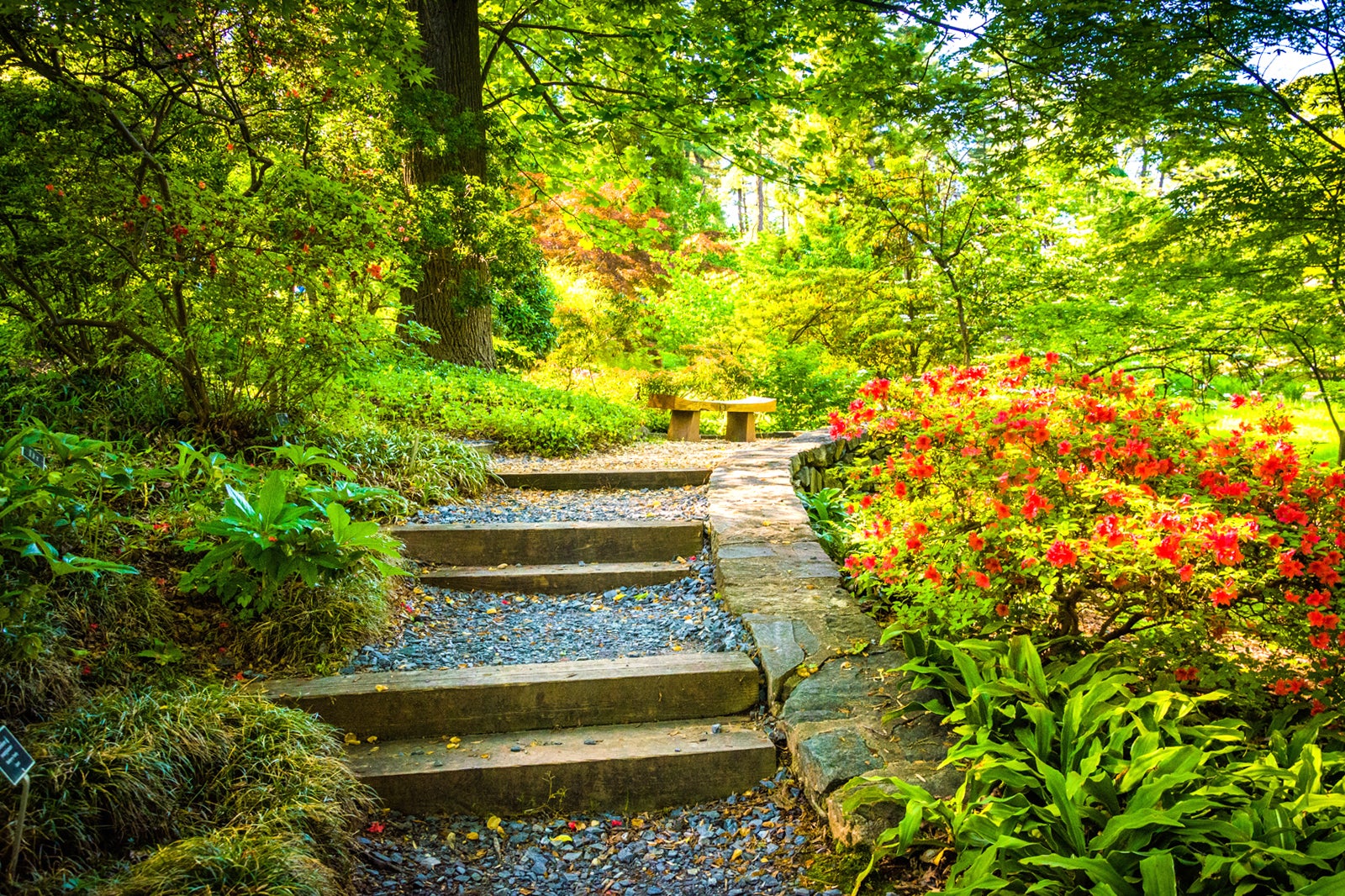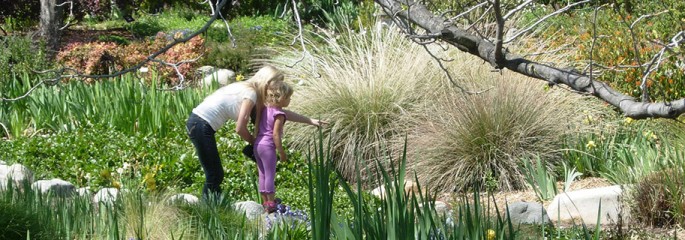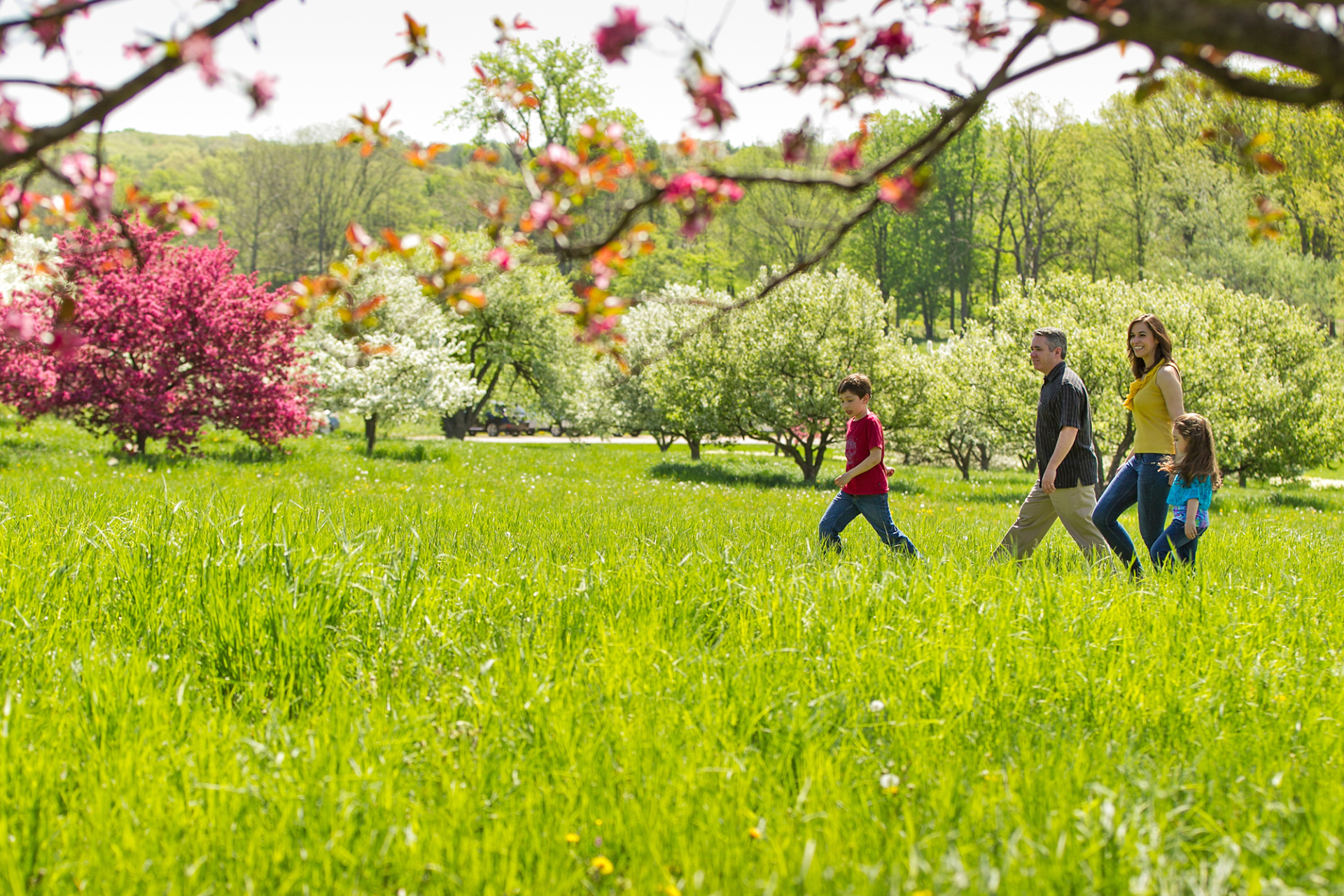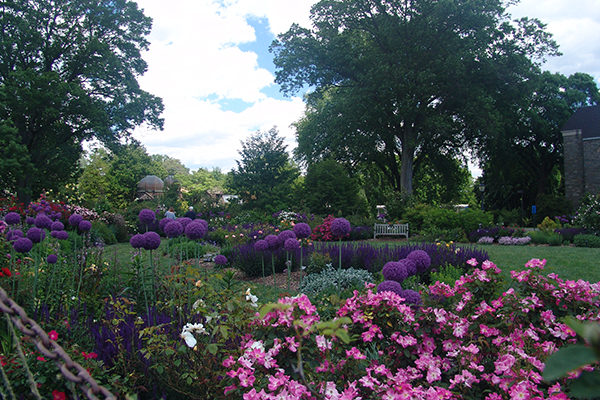The Practical Guide to Arboretum Visits: What You Need to Know

Arboretum Visits: A True Friend’s Guide to Exploring Tree Museums (and Making the Most of Every Branch)
You know, it’s honestly funny to me now—how nervous I was the first time I visited an arboretum. Picture me at the entrance, clutching a crumpled map, squinting at some intimidating Latin plant name, and immediately wondering if maybe this was all a bit too fancy for someone whose houseplants mostly survive on luck. Spoiler: it wasn’t. The magic of arboretums is that they’re for everyone—seriously, everyone. Whether you can pronounce “metasequoia glyptostroboides” or just came for a walk in the fresh air, there’s a place under those branches for you.

Let’s take a relaxed stroll together—one real friend to another—and I’ll share everything I’ve learned so you can soak up every peaceful, leafy moment. No jargon overload. No pressure. Just simple joys, practical advice, mistakes (because wow, I made plenty), and the best ways to let curiosity lead your day.
This brings us to What Is an Arboretum? (It’s Not Just “Tree Park” After All)
Here’s my no-frills definition: An arboretum is a living library for trees (and shrubs), where each plant gets special attention—from how it’s labeled to how it grows—so people like us can learn, wander, picnic, or just relax. Unlike local parks where the trees often just... happen to grow there, an arboretum has purpose behind every planting and usually labels with names and stories you’d never discover on your own.
Picture This
You’re walking down a shaded path lined with hundred-year-old oaks. To your left? A row of cherry trees that will absolutely steal spring’s show in March or April (take notes if you’re scheduling). To your right? Maybe weird-looking conifers from Australia—tiny kangaroo paw prints optional.* It feels both impossibly big and sneakily intimate at once.
Did you know there are more than 1,000 recognized arboretums worldwide? In the U.S. alone there are over 500 registered by ArbNet! That means wherever you live, there’s likely one near-ish—even if it doesn’t shout its existence from billboards.
*(Okay… kangaroo prints probably not guaranteed.)
Not-So-Obvious Secret
A ton of cutting-edge research happens quietly behind the scenes: tracking how rare species cope with climate change; testing different approaches to pest management that could help forests everywhere; offering seeds for replanting after wildfires far beyond their own grounds.
There’s something oddly comforting in knowing scientists camp out here as much as birdwatchers do.
Why Bother? Honest Perks You Don’t Notice Until You Go
I’ll level with you: If you only read Instagram captions about “tree baths” or saw stock photos of retirees feeding ducks at lunch hour, you might think arboretums are all gentle yawns and not much thrill. But let me show you some real reasons people go—plus some surprises I stumbled into myself:
1. Rare Wonders
Ever wanted to see a dawn redwood—a tree once thought extinct until it popped up again in China in the 1940s? Or maybe stand by a ginkgo that's direct family to those alive when dinosaurs roamed? Many arboretums have these living relics (the Arnold Arboretum in Boston has one that was actually from original wild Chinese seed!). It really never gets old seeing something older than time itself leaf out every spring.
2. Seasonal Surprises
Spring brings floods of magnolias and cherry blossoms so lush I dare you not to take twenty photos. Summer is riotous greens and butterflies everywhere at places like The Morton Arboretum near Chicago (their Children’s Garden is epic if little ones are along!). Autumn... Oh wow—autumn—think maples glowing like fire lanterns at places like the National Arboretum in D.C., or dogwoods turning elegantly purple-red at Dallas Arboretum & Botanical Garden.
Even winter stuns: bare branches become sculpture against low sun; conifers keep courtyards emerald bright while frost crunches underfoot (try Holden Arboretum in Ohio for snowy forest boardwalks).
3. Family Adventure Without Hype
You don’t need roller coasters for happy kids! Tons of sites have scavenger hunts (“find this leaf shape!”), classes where they make messy rubbings or fairy houses out of twigs (check your destination calendar—a surprising number offer this on weekends).
4. Photography Paradise
Early morning mist clinging to leaves? Wildflowers glowing after rain? Trust me: even if all you own is your phone camera, you’ll capture magic here. Some gardens even hold photo competitions (“Peak Fall Color” weeks get fierce among locals!).
5. Mental Recharge
After a tough week—or heck, even a so-so Wednesday—I always leave calmer than when I arrived. Science backs this up! Studies from universities like Exeter show even half an hour among trees lowers stress hormones noticeably.

6. Giving Back Counts (If You Want)
Many arboreta run volunteer days—help plant saplings or collect seeds right alongside their horticulturists; some have “citizen science” events for pollinator tracking or water sampling that truly shape research outcomes worldwide.
Bottom line: If all you want is peace and quiet under ancient green things—a+ choice! But if chasing kid giggles or geological marvels calls louder? That works too.
Types of Arboretums & Finding Your Fit (from Big-Ticket Names to Hidden Gems)
Not all arboreta are built alike…which makes choosing one weirdly tricky at first!
Major Types:
- Flagship Public Gardens: Think massive spaces like Missouri Botanical Garden (they boast over 6 million pressed specimens!) or Kew Gardens in London; open year-round, cafés onsite, sometimes art installations among the plants.
- University Dip-In Spaces: Often attached to colleges (like UC Davis Arboretum) and blend student science projects with guided tours—plus fun people-watching when students sneak power naps on sunny lawns.
- Theme-Based Collections: Some focus tightly on native plants only (try Lady Bird Johnson Wildflower Center in Texas), while others are all crazy about conifers/ginkgos/you-name-it.
- Private & Research-Only Collections: More exclusive; may only open doors for events/special tours by reservation—a little secret club vibe but so worth it if timing matches!
How Do You Find One?
I missed ten years’ worth of world-class beauty because mine didn’t even have its own flashy sign by the highway! Here’s my shortcut:
- Google “arboretum near me”—yes really.
- Check out ArbNet for accredited global lists.
- Visit American Public Gardens Association directory for U.S./Canada picks.
Nothing wrong with starting humble: my favorite visits still happen at smaller local places where three volunteers run everything and let my niece water potted saplings “just because.”
Getting Prepped: How To Actually Plan (& Make Your First Visit Joyful)
Alright—it’s easy to talk yourself out of going (“too far”; “what will I do?”) but let’s break it into no-mistake steps so even your first trip feels smooth:
Step One: Start Close
Don’t chase famous names first unless they’re handy! Local tiny arboreta can be easier walks and less intimidating for learning basics…and tend to have friendlier staff who chat longer when crowds are light.
Case Study:
Lizzie from my book club started at Brooklyn Botanic Garden mainly so she could meet her friend by Prospect Park subway stop—not realizing she’d fall head-over-heels for bonsai displays there instead!
Step Two: Scope Out Details Beforehand
- Hours change a lot by season/trail work/weather (I’ve turned up mid-winter only to find "Closed For Annual Pruning" signs staring back.)
- Check their events calendar—things like hands-on classes (“Make Your Own Birdhouse!”) fill up fast!
- Does weather look dicey? Go anyway—cloudy days = emptier trails + amazing moody photos.
Personal Aside:
I once timed my arrival accidentally during a tulip festival crowd surge…learned quickly that weekdays are golden times if peace is what you’re after!
Step Three: Pack Like You Mean It
Here’s what lives permanently in my car trunk now:
- Walking shoes that actually fit.
- Layered clothes & raincoat—even summer mornings can be chilly under dense shade.
- Water bottle + light snacks* (*I’m partial to almonds these days—they don’t squish).
- Phone/camera fully charged (+backup battery!)
- Plant ID app pre-downloaded OR mini field guide.
- Handwritten list of anything special on-site ("Magnolia bloom trail!") so I don’t zigzag chaotically.
Don't forget spare socks...after early-spring puddle mishaps taught me the hard way 🤦♂️
Blunders & Bright Spots: Stories From My Early Days
If perfection was required here—I’d never have made visit #2! Some memorable stumbles:
- Tried hiking every single trail at Minnesota Landscape Arboretum…in July…midday heat nearly melted my sneakers off.
- Missed seeing rare Franklin tree blossoms at Bartram's Garden because I was too stubborn/proud/distracted dog-petting to ask staff “Which way?”
- Left home without bug spray during May blackfly season = surprise buffet for them.
But each hiccup had its upside:
- Discovered spontaneous hammock communities hidden beside main path (#goals).
- Found that simply slowing down—noticing birdcalls or layered bark textures—unlocked way more delight than ticking boxes off fast.
- Staff/volunteers love curious questions—their tips on where frogs breed or which garden beds pop best that week made me feel instantly ‘in’ on secrets most visitors miss entirely.
The point? Every error is just another story someday…and honestly half the fun is what doesn’t go according to plan!
Advanced Tricks Once You’ve Got The Bug
Maybe after trip #3 you're ready for more than a gentle stroll:
Become The Sherlock Holmes Of Trees
Try free apps like Seek by iNaturalist —snap any leaf/bark/fruit/pinecone and watch it ID right before your eyes! Or pick up cheap used field guides (“National Audubon Society Field Guide to Trees” is actually fun).

Some gardens host ID workshops—I once spent two hours chasing fall leaf color variations with ten strangers and now spot differences between red oak vs scarlet oak on sight (#nerdpride).
Experiment With Citizen Science
Ever logged spotted pollinators or spring bloom dates via clipboard surveys? Even short help-outs matter—a few hours aiding researchers creates ripple effects across continents sometimes!
Check notice boards/emails—they want hands-on helpers far more often than you’d imagine.
Plan Return Trips Across Seasons
A hidden trick: trees totally transform month by month! Visit Mount Auburn Cemetery's famous pink crabapple lane in May vs bare November and you'd swear it's two worlds colliding—and seeing familiar paths under changing leaves deepens appreciation like nothing else.
My grandmother always said “one garden holds four seasons’ stories”—she was right!
Quick Tools Check—not Gear Overload
Don’t panic-buy everything Amazon suggests because honestly? Most joy comes with less stuff:
| Tool | Why Bother | Okay Yes/No Moments |
|---|---|---|
| Map | Essential for longer trails | Paper ones wilt but digital maps drain battery |
| Plant/Bird Apps | Instant discoveries | Data signal can drop; screenshot key screens |
| Field Guides | Deeper dives | Fun offline but heavy; pick pocket-sized editions |
| Binoculars | For birders/enjoying high branches | Bulky yet incredibly worth it during migration weeks |
| Notebook/Pencil | Jots down quick impressions/drawings | Feels old-school cozy but optional |
Build slowly—the best gear advice anyone gave me: borrow before buying bigger items (binocular envy is real…I lasted three years before splurging).
Visitor Snapshots: Real Experiences That Might Sound Familiar
Sometimes other folks’ adventures speak louder than checklists:
The Rookie Parent Group
Maya coordinated four families meeting up Saturdays at North Carolina Arboretum—with zero gardening expertise between them! Turns out toddler “leaf detectives” became unstoppable; as Maya said later, "They pointed out mushrooms we adults would've totally missed."
Photo Walk Fanatics
Devlin joined Dallas Arboretum's monthly sunrise photo walks after inheriting his dad's camera gear—and ended up publishing botanical closeups in local art shows…despite having killed three cacti last summer (“Turns out photography doesn't require watering”).
Elder Explorer Routines
Hector survived big city stress by cycling streets every Sunday until he reached Toronto’s Edwards Gardens; he tells newcomers his secret joy isn’t the blooms but sketching birds in peaceful corners with warm thermos cocoa—even during January chills!
See? There isn’t one kind of visitor—you do not need plant knowledge nor hiking skills nor expensive gear nor company—the best style is your own comfort-first groove.
Real Talk: When Visits Fizzle Out Or Stuff Goes Sideways
Even perfect plans go sideways occasionally:
Situation: Main trail shut due to storm damage
Solution: Ask staff—the side trails sometimes reveal secret flower clearings nobody crowds into except regulars "in-the-know".

Situation: Crowds everywhere on holiday weekend
Solution: Arrive after lunch rush or peek schedule for lesser-known weekday evening hours; worst case bring noise-canceling headphones + read bench-side while beauty re-emerges post-bus-tour departure!
Situation: Plant identification overload/meltdown
Solution: Snap mystery finds with phone camera then move on—a lazy afternoon later Googling names over coffee was how my own rare pawpaw discovery happened anyway!
Honestly? If nothing else works... ditch expectations entirely. Find one shady tree and claim it as yours for an hour—that pause counts as visiting too.
Clear Steps For Your First (& Second...& Twentieth) Visit – Cheat Sheet Time
Let’s condense all this friendship wisdom into nine zero-stress steps:
- Pick an accessible local spot using directories (ArbNet, APGA directory)
- Explore their website/events list – jot favorites (+ note any closures)
- Choose shorter loop/main route near benches/rest spots
- Pack lightly but wisely – shoes/water/snacks/phone + app/guide/layers
- Gear up according to weather—trust forecast changes!
- Arrive without agenda; linger wherever curiosity strikes most
- Genuinely ask questions—guides adore showing hidden favorite plants/sites-of-the-week!
- Mix snapping pics/journaling observations (“What color surprised me most today?”)—but also sit unplugged sometimes
- Reward yourself afterward—a treat meal nearby works wonders ("Well-earned pie" became tradition fast!)
A gentle reminder: You cannot tick off "all" trees any more than finishing Netflix—all visits add layers not finish lines 🎉
The Next Level — Keeping Green Curiosity Bright Year-Round
If an afternoon among oaks sparks something inside (honestly happens fast)...here's what keeps that fire kindled between visits:
- Subscribe to site newsletters/membership deals—often means discounts + heads-up privileges before major blooms/festivals hit peak season crowds!
- Start a micro-journal/sketchbook logging which flowers changed weekly/monthly—it sharpens noticing skills faster than any blog post does.
- Share stories/pictures online tagging friends—it multiplies wonder exponentially plus maybe inspires your cousin out west who insists she hates dirt 😉
- Try joining a community class/workshop; virtual talks exist now too—even topics from mushroom ID basics to designing backyard pollinator patches!
- Volunteer occasionally—it gives back AND deepens belonging within passionate plant-loving communities worldwide.
Seasons Matter More Than Most People Realize
A basic calendar tip from seasoned staffers everywhere:
| Month(s) | Typical Highlights |
|---|---|
| March–April | Cherry/Magnolias/Fruit Trees Bloom |
| May–June | Roses/Rhododendrons/Irises |
| July–August | Lush Canopies/Shady Native Wildflowers |
| September–October | Peak Fall Color/Warm Evenings |
| November–February | Bare-Bones Beauty/Birdwatching/Holly Red |
But hey—even rainy November brings drama; clusters of witch hazel blossom yellow long after most leaves drop...and January mist often frames twisted pines more dramatically than summer ever could.
Top Five Must-Know U.S./Canadian Arboreta To Bookmark
(All beginner-friendly—with extra perks!)
-
Arnold Arboretum – Boston, MA
- Free admission year-round (!)
- Stunning lilac collection mid-May
- Easy paved paths + guided family discovery carts weekends
-
Morton Arboretum – Lisle, IL
- World-renowned children’s garden
- Curated self-guided trails marked beginner/intermediate/challenge levels accordingly
-
UC Davis Arboretum — Davis, CA
- Homegrown California natives demonstrate drought resilience firsthand
- Absolutely flat terrain plus interactive activity stations
-
Royal Botanical Gardens – Burlington/Hamilton ON
- Ornamental rock gardens mingle right beside wild marshland hikes
- Thriving Saturday children programs plus epic spring magnolia festivals
-
Tyler Arboretum – Media PA
- Fairy tale tree houses built into woods prove irresistible no matter age group!
- Weekly themed family walks led year-round
Find one close enough—or put these on your personal travel wish-list!
Extra Support — When Your Questions Aren't Answered Here
Stuck somewhere odd (“Can I bring my leashed turtle?” happens more often than you'd think)? Never hesitate:
- Call ahead—the front desk knows all quirks (“today’s highlights,” surprise closings/tours/kid program tips)
- Join Facebook groups / Reddit r/botanicalgardens—for real-time peer hacks/local meetup notices
- Email university horticulture student clubs—they love answering random novice stuff nobody else covers!
All silly/confused queries welcomed—it beats missing out quietly.
Final Thoughts From A Fellow Explorer Under The Leaves 🌳💚
If no one else has told you yet—you absolutely belong here among whispering boughs and fluttering shadows whether your hat’s sun-stained pro-level territory or borrowed awkwardly last-minute from someone else’s closet!
Every trip adds another layer—notching new joys beneath broken sunlight; every misread map leads somewhere gently wild eventually…even if just toward better coffee breaks with next time smarter shoe choices tucked inside your backpack.
So lace up those reliable shoes (yes again)—start small—but let each step bring widening curiosity and comfort knowing thousands have wandered these landscapes before…and left them richer not just greener along the way.
Promise me this much: Take whatever pace feels right—you’re not late or lacking anything vital—the whole point is simply finding place & peace beneath sky-high branches older than us both combined.
Until we bump into each other somewhere under feather-soft shade,
Cheers and happy wandering,
Your supportive friend's guide through every arboreal adventure



